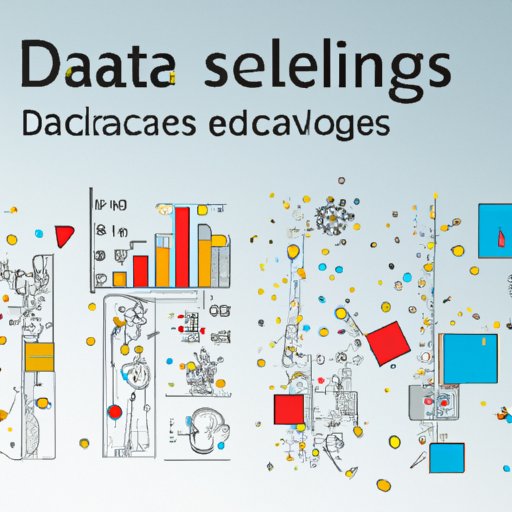Introduction
Data science is a rapidly growing field that combines mathematics, statistics, computer science, and domain expertise to extract meaningful insights from data. It enables businesses to make better decisions, uncover hidden patterns and trends, and gain competitive advantages. But what does data science mean? In this article, we’ll explore the basics of data science, the different types of data science, use cases for data science, the role of machine learning in data science, and the benefits and challenges of data science.
Exploring the Basics of Data Science
So, what is data science? Data science is the process of using data to answer questions and make predictions. It involves collecting, cleaning, analyzing, and interpreting large amounts of data to uncover patterns and trends. Data scientists use a variety of tools and techniques, such as machine learning and artificial intelligence, to analyze data and draw conclusions. By leveraging data science, businesses can gain insights that help them make better decisions, improve their products and services, and increase their efficiency.
What are the key components of data science? The main components of data science include data collection, data wrangling, data analysis, and data visualization. Data collection involves gathering data from various sources, such as databases, web APIs, and sensors. Data wrangling involves cleaning and preparing the data for analysis. Data analysis involves using statistical techniques and machine learning algorithms to identify patterns and trends in the data. Finally, data visualization involves creating charts and graphs to visualize the results of the analysis.
How does data science help businesses grow? Businesses use data science to gain insights that can help them make better decisions, optimize their processes, and increase their efficiency. For example, data science can be used to identify customer segments, forecast demand, and detect fraud. By leveraging data science, businesses can gain a competitive advantage and achieve long-term success.
Understanding the Different Types of Data Science
Data science can be divided into three main types: descriptive analytics, predictive analytics, and prescriptive analytics. Descriptive analytics involves analyzing and summarizing past data to understand what happened. Predictive analytics involves using machine learning algorithms to make predictions about future events. Prescriptive analytics involves recommending actions to take based on the predictions made by predictive analytics.

Examining the Use Cases for Data Science
Data science has many applications across industries. Some common use cases for data science include customer segmentation, demand forecasting, fraud detection, and product recommendation. For example, data science can be used to segment customers into groups based on their behavior, forecast demand for a product or service, detect fraudulent transactions, and recommend products to customers based on their past purchases.
To illustrate how data science is being used in the real world, let’s look at a few case studies. A financial services company used data science to develop a predictive model to identify customers who were likely to default on their loans. An online retailer used data science to build a recommendation engine that suggested products to customers based on their past purchases. And an insurance company used data science to develop a fraud detection system that identified suspicious claims.
The Role of Machine Learning in Data Science
Machine learning is a type of artificial intelligence that enables computers to learn from data and make decisions without explicit programming. It is becoming increasingly important in data science, as it enables data scientists to quickly analyze large amounts of data and make accurate predictions. Examples of machine learning in data science include natural language processing (NLP), computer vision, and automated decision-making.

Exploring the Benefits of Data Science
Data science provides many benefits to businesses. It can help increase efficiency by streamlining processes and reducing costs. It can also improve decision-making by providing insights that can help businesses make better decisions. Additionally, data science can help businesses save money by identifying areas where they can reduce spending.

Analyzing the Challenges of Data Science
Although data science can provide many benefits, there are also some challenges. One challenge is a lack of resources. Many businesses don’t have the necessary resources to implement data science projects. Additionally, data quality issues can lead to inaccurate results. Finally, privacy and security concerns can arise when dealing with sensitive data.
Conclusion
Data science is a rapidly growing field that has many applications across industries. It combines mathematics, statistics, computer science, and domain expertise to extract meaningful insights from data. This article explored the basics of data science, different types of data science, use cases for data science, the role of machine learning in data science, and the benefits and challenges of data science. Data science can be a powerful tool for businesses looking to gain a competitive advantage and achieve long-term success.
(Note: Is this article not meeting your expectations? Do you have knowledge or insights to share? Unlock new opportunities and expand your reach by joining our authors team. Click Registration to join us and share your expertise with our readers.)
